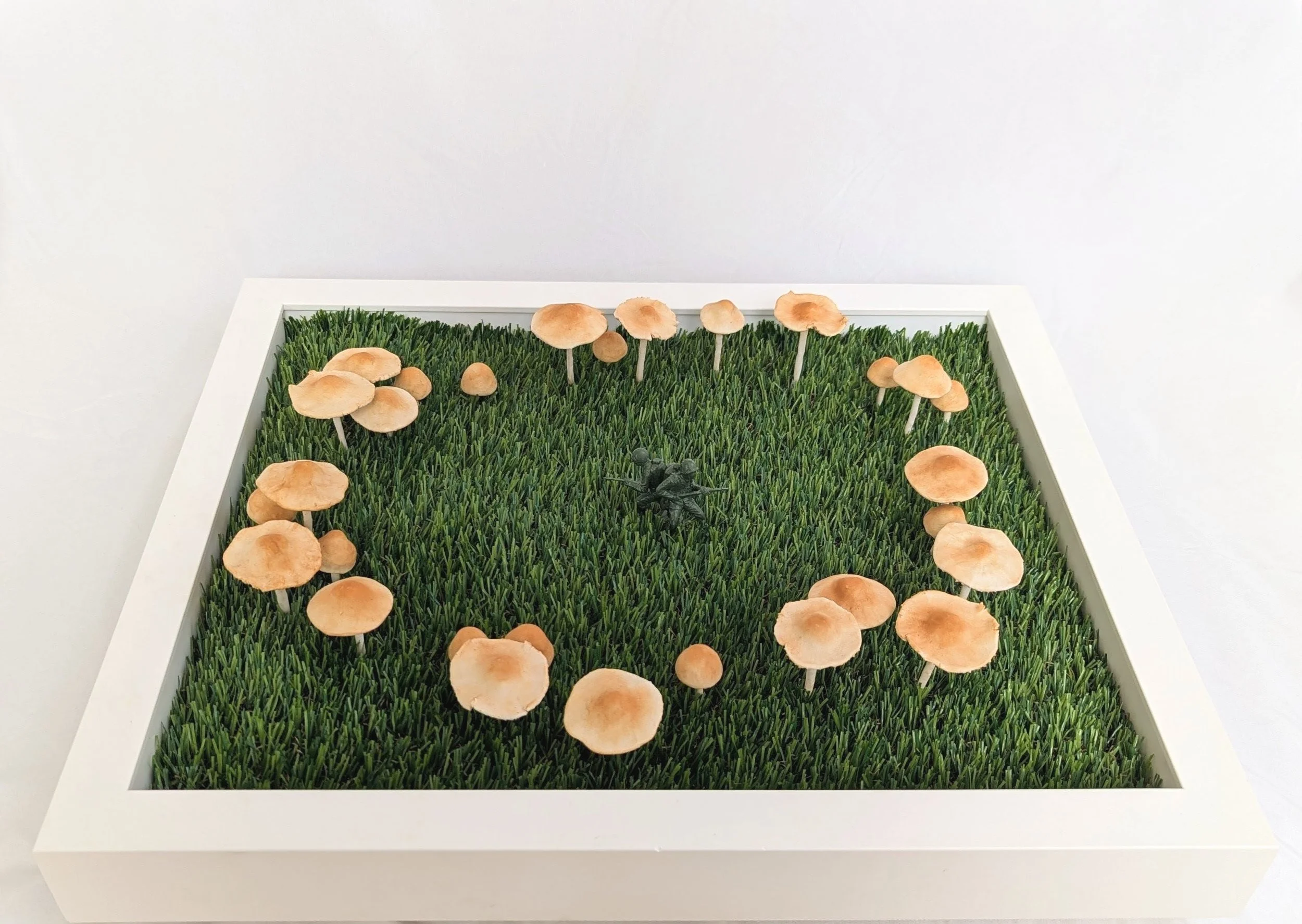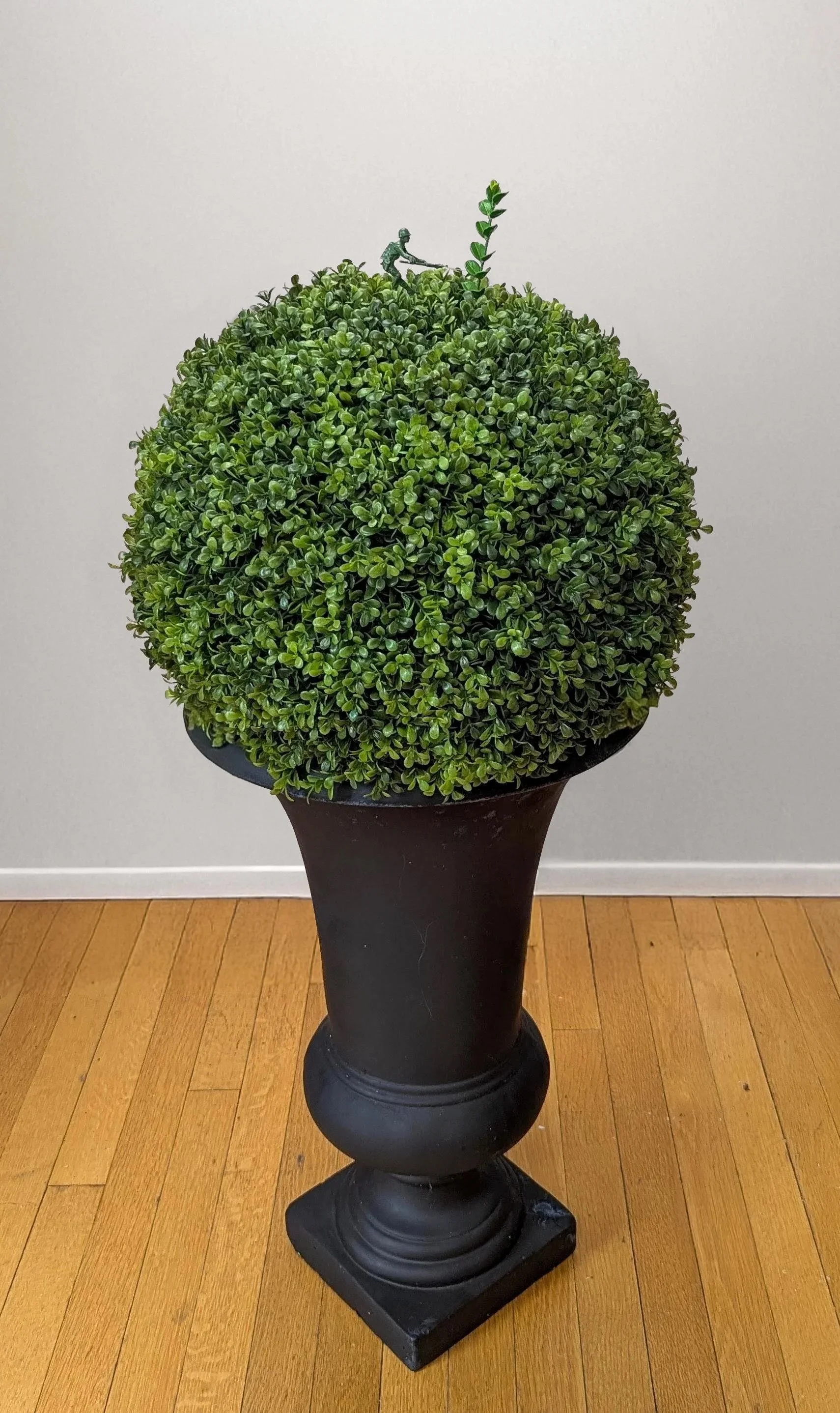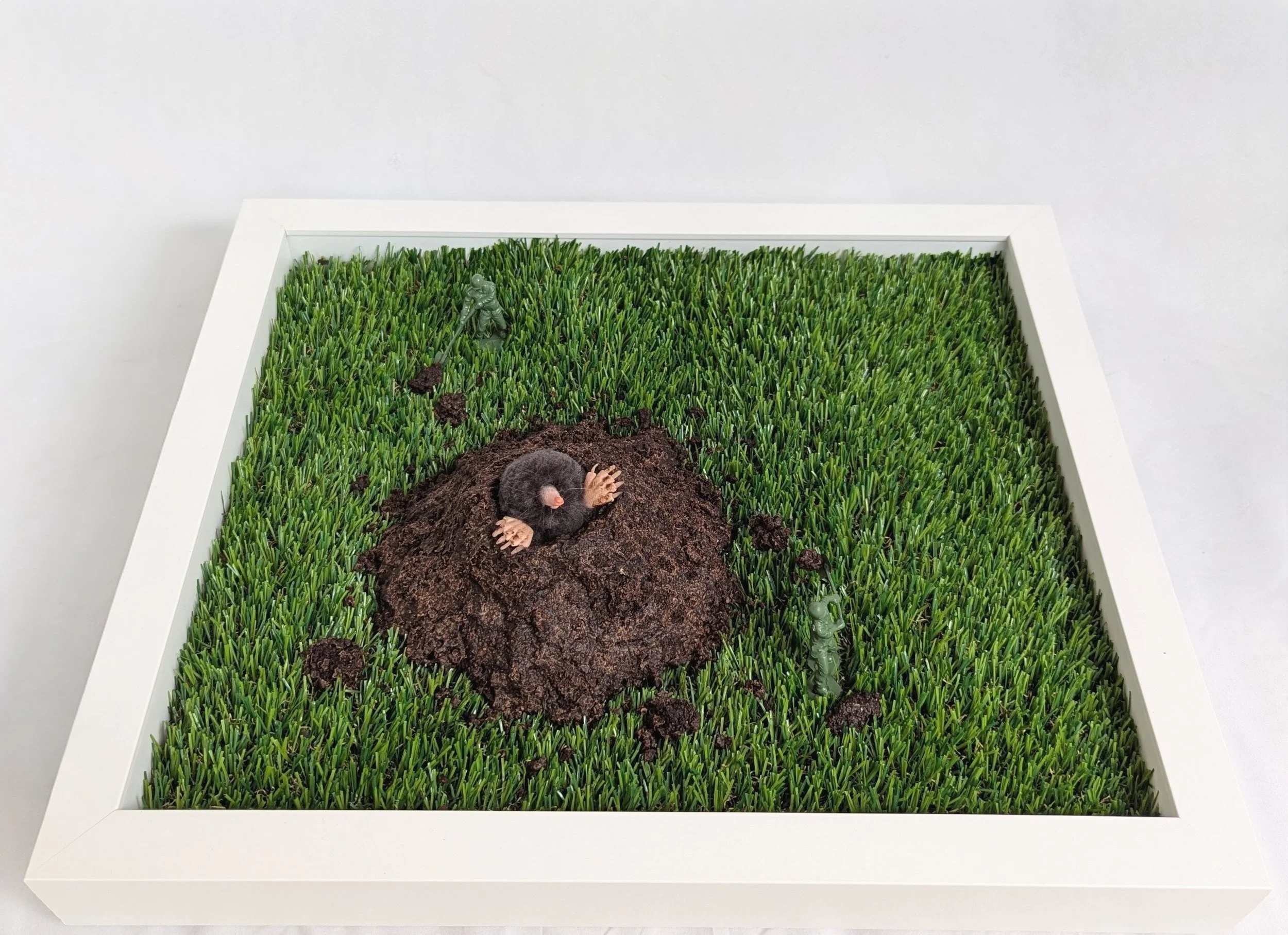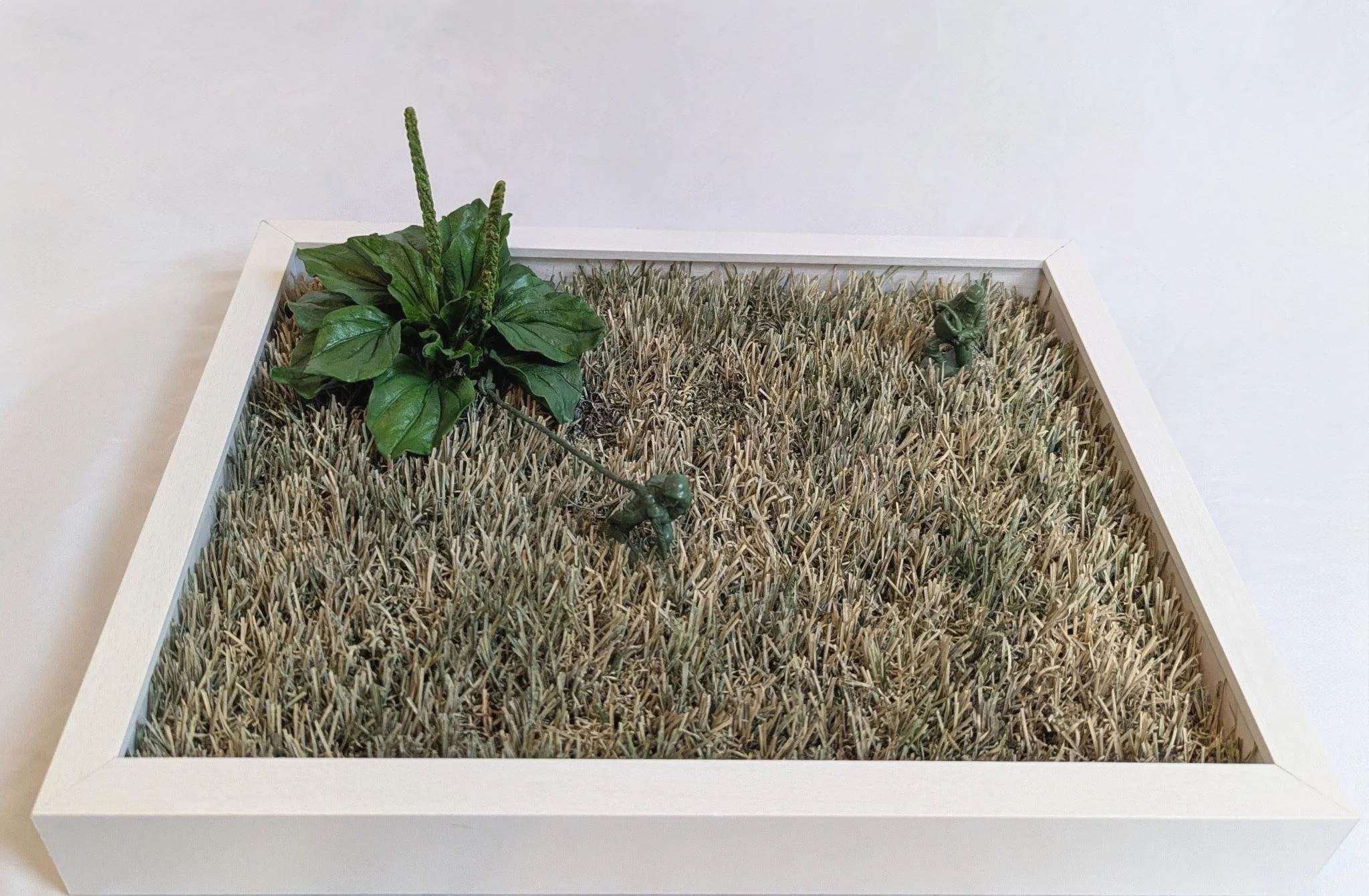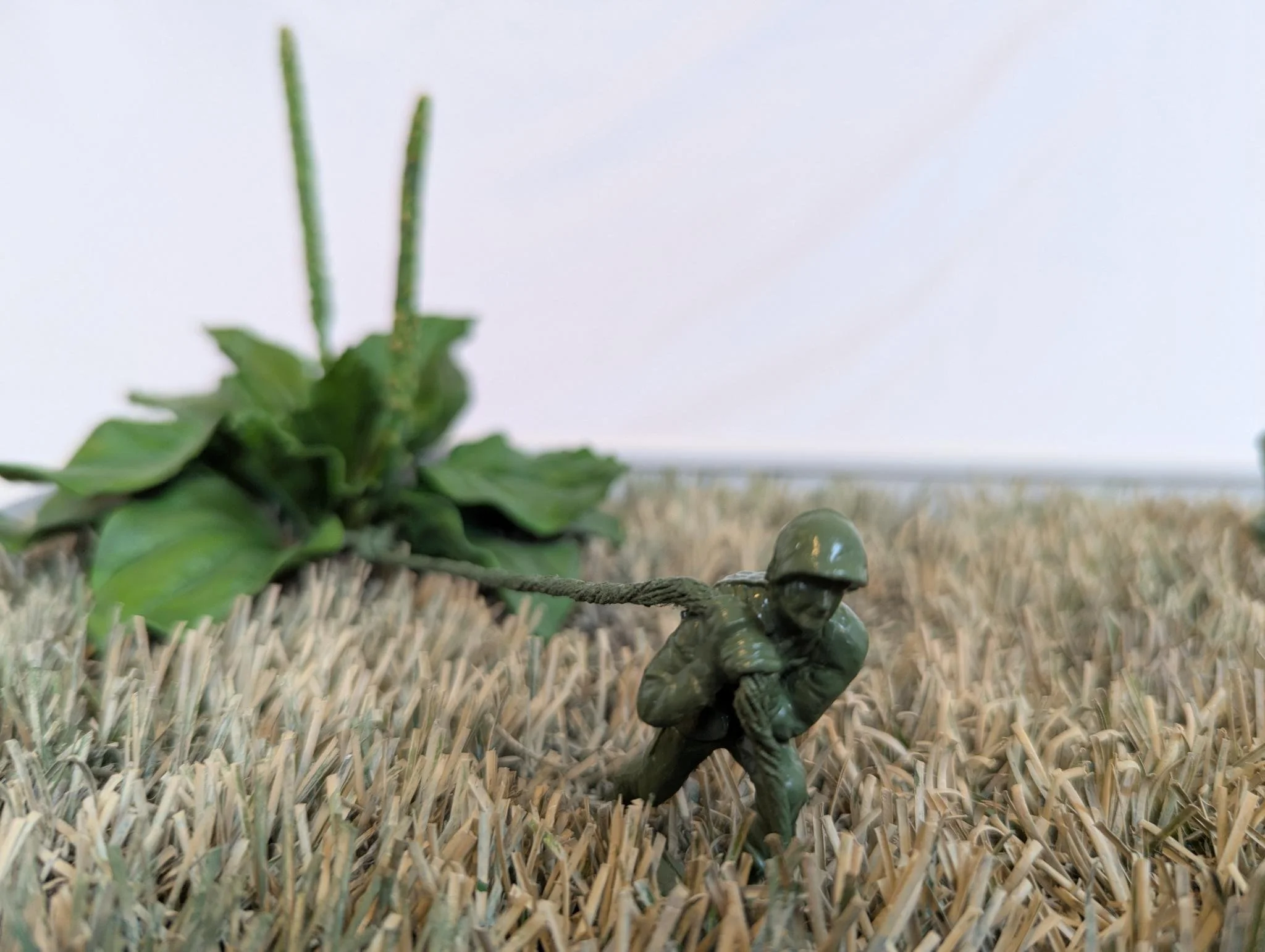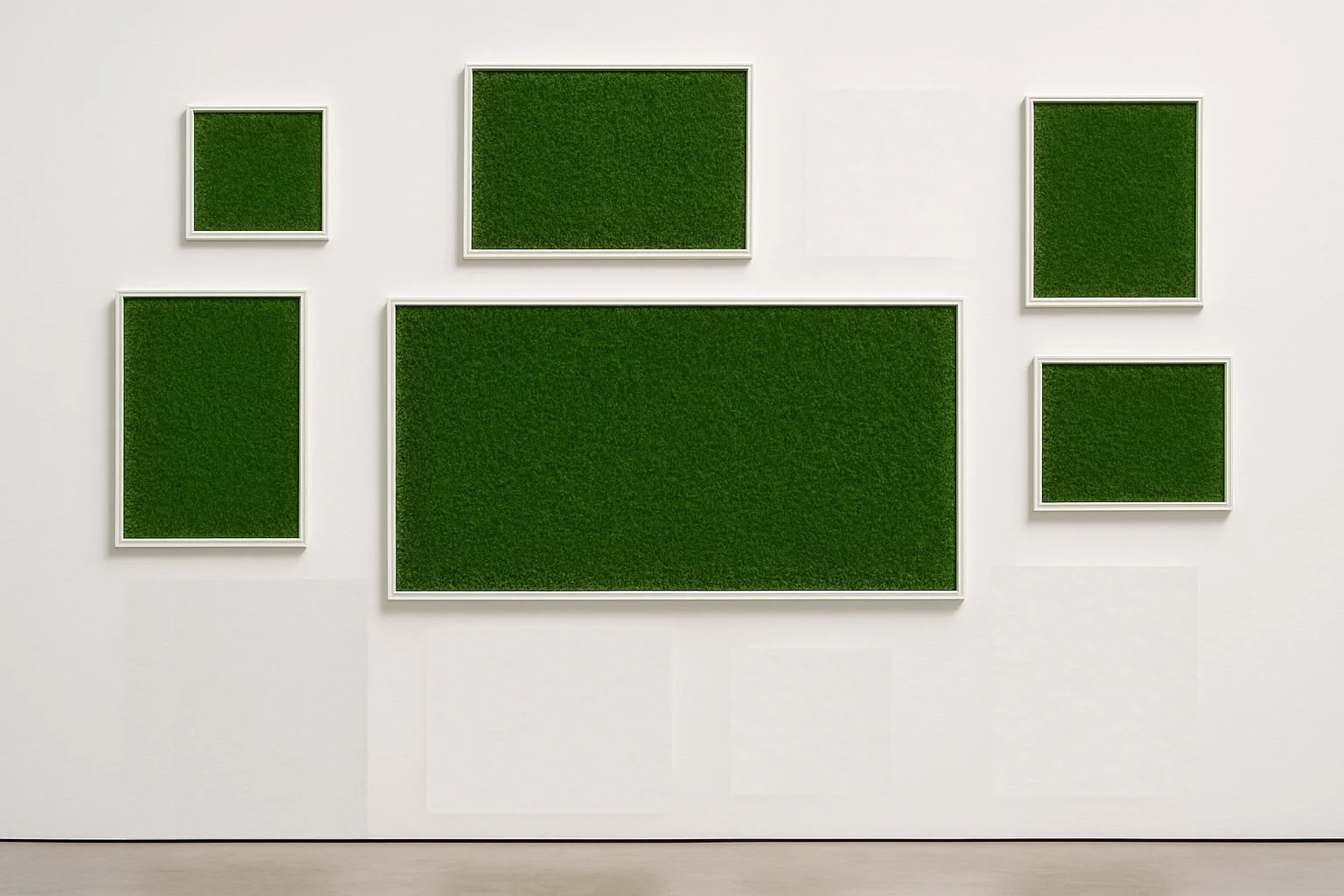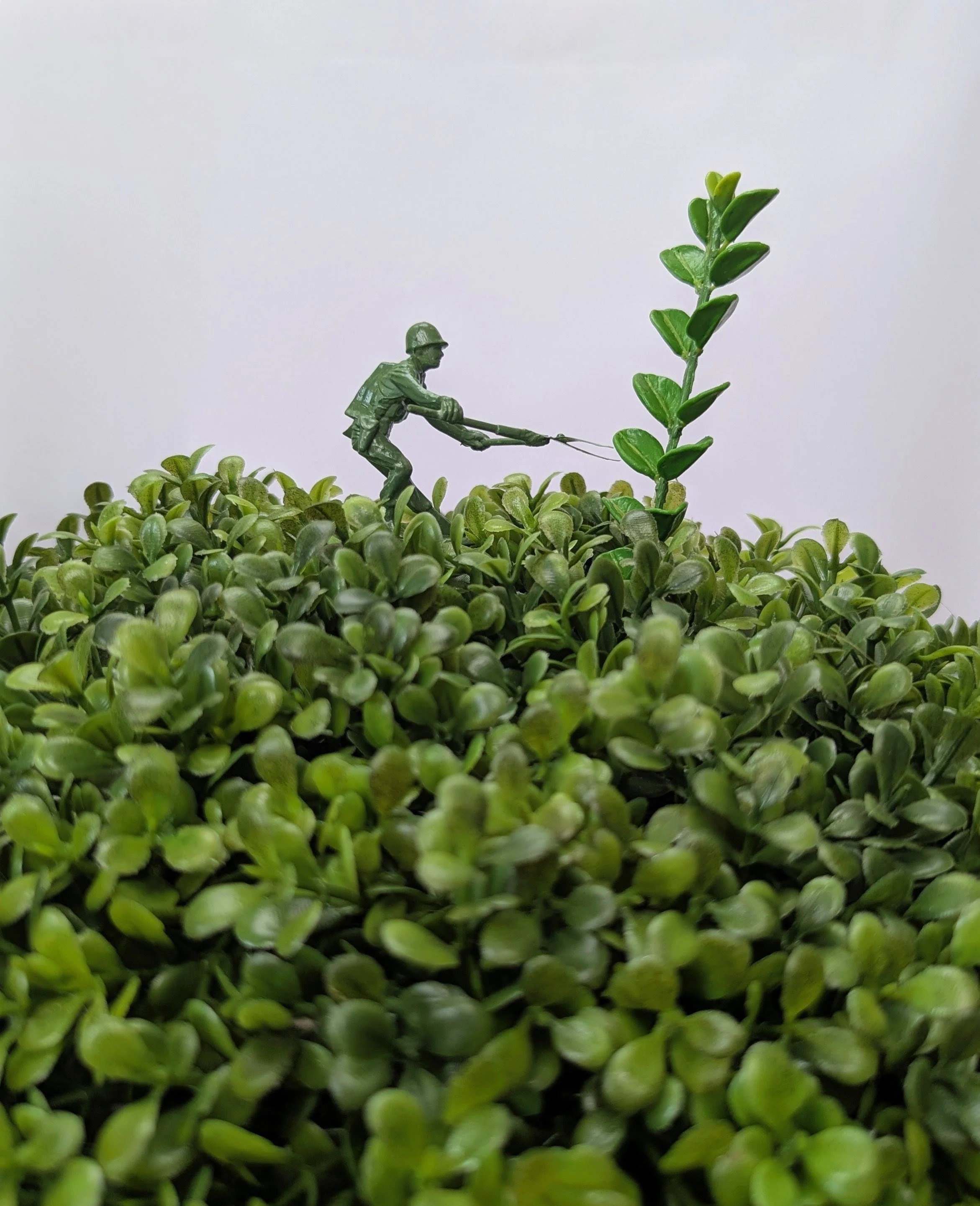
There Goes the Neighborhood Exhibition Proposal
Overview
“There Goes the Neighborhood” uses American grass lawns (and the surrounding culture) as an analogy for systems of control, conformity, exclusion, and violence. The work uses humor to invite reflection on difficult ecological and social issues.
Artist statement
“You must understand: we are at war” - TV commercial for Kobalt 40-volt outdoor power tools
“Our enemy will feel the bite of our iron. Kill them!” - TV commercial for Scotts EcoSense Weed-Be-Gone
A grass lawn is useless. The roots of lawn grasses are too shallow to prevent soil erosion, and the plants themselves provide nothing to pollinators. They require tremendous amounts of water to keep alive. Perhaps most perversely, they are useless by design: the origins of the grass lawn can be traced to displays of wealth by the British aristocracy, where they communicated “look at me! I’m so rich I can literally waste land.”
This uselessness must be preserved at all costs. If a dandelion (early food for pollinators, edible to humans, deep taproot that helps remediate soil) infiltrates, you have failed to maintain order in your kingdom. It must be destroyed with maximum prejudice, lest neighboring fiefdoms perceive weakness (or you receive a passive-aggressive letter from the HOA). Keep all growth in check. There is no room for divergent assessments of value. If you need a reminder of your mission objectives, study your neighbor’s lawn. Yours should look identical, yet somehow slightly greener. Remember the words of General Kobalt, “We are at war!”
Description of Exhibition
The focal pieces of “There Goes the Neighborhood” are 10 works of sculpture– 7 on pedestals and 3 freestanding–which contrast artificial turf with painstakingly hand crafted weeds and other "undesirable" elements. These pieces are complimented by framed rectangles of artificial turf hung salon-style on the gallery walls, creating a 360° environment.
If feasible, the center of the gallery will contain a large rectangle of artificial turf mostly enclosed with white picket fencing where visitors are invited to decorate leaves cut from recycled paper to contribute to filling the space with “leaf litter.” This process will create a joyful, nostalgic environment where everyone is encouraged to play in the leaf piles. The leaves will be lasercut, a process which results in a faint smell of woodfire, adding a subtle olfactory component.
Equipment/Materials Requirements
Minimum 15x15’ space
7 white pedestals
Ability to suspend a small piece from the ceiling (piece weighs under 5oz)
Someone to turn on and off the fountain pump (remote controlled) as well as charge the pump every 100-ish use hours
Artist Bio
Judith Klausner is a Somerville, MA artist with a love for small, intricate, and overlooked things. Her experience of invisible disability and chronic pain play an integral role in how she views the world and creates art. Her work has been featured in Harper's magazine, Reader's Digest, the Huffington Post and NPR, and exhibited in venues internationally including the Brattleboro Museum and Art Center, Southern Vermont Art Center, Susquehanna Art Museum, Museum of Natural History, RI, Museo di Arte Moderna e Contemporanea di Trento e Rovereto, and the Boston Children's Museum. Judith enjoys playing with her food, both recreationally and professionally.
Potential Public Programs
Leaf Litter Ornament Workshop
Many creatures rely on leaf litter to overwinter. This workshop is a celebration of “leaving the leaves” using recycled materials to create double-sided leaf ornaments. On the back of the leaf, participants will be guided in creating a small drawing or collage of an organism that overwinters there.
Equipment/materials requirements for workshop:
Tables
Chairs
Scissors
Pencils
Markers
Colored pens
Glue sticks
Hot glue guns (if appropriate for age range)
Recycled brown paper bags
Other recycled paper and cardboard
Hole punches
String
Leaf templates (provided by artist)
Reference photos for animals (provided by artist)
Artist/Curator Q&A
I enjoy speaking about my work and process, and my favored format for that is a Q&A. I find this setup most conducive to developing an open dialogue, and I feel it encourages audience participation.
Included Works
Are You Feeling Lucky?
dimensions: 5"x15"x12"
materials: Crepe paper, wire, colored pencil, pastel pigment, acrylic paint, clay, flocking fiber, green army man toy, artificial turf
date: 2025
Ringed
dimensions: 4"x20"x17"
materials: Clay, acrylic paint, wire, pigment, green army man toys, artificial turf
date: 2025
Dispersal
dimensions: Height variablex15"x12"
materials: Clay, acrylic paint, wire, thread, paper napkin, resin, green army man toy, artificial turf
date: 2025
Outside the Lines
dimensions: 38"x18"x18"
materials: recycled aluminum, acrylic paint, wire, toothpicks, green army man toy, secondhand artificial topiary
date: 2025
Keeping Up With the Joneses
dimensions: Diptych, each 3"x16"x9"
materials: Clay, acrylic paint, wire, green army man toy, artificial turf
date: 2025
Leaf Litter
dimensions: 4"x20"x17"
materials: recycled paper, acrylic paint, clay, wire, green army man toy, artificial turf, sound file (to be accessed by a QR code on personal listening devices)
date: 2025
Making a Mountain
dimensions: 3"x20"x17"
materials: Clay, wool fiber, acrylic paint, wire, pigment, coffee grounds, recycled aluminum, green army man toys, artificial turf
date: 2025
(Don’t) Touch Grass
dimensions: 5.25"x20"x17"
materials: Plastic sign, acrylic paint, wire, green army man toys, artificial turf
date: 2025
Thirst Trap
dimensions: 5.5"x215"x12"
materials: Clay, acrylic paint, wire, resin, green army man toys, artificial turf
date: 2025
Not In My Backyard
dimensions: 38x30x27"
materials: Clay, cardboard, paint, wire, bird spikes, bird bath, fountain pump, plastic toy green army men
date: 2025



